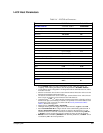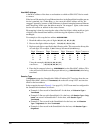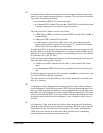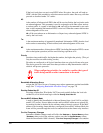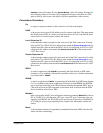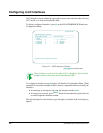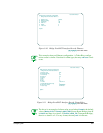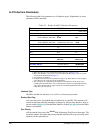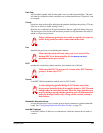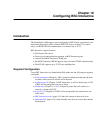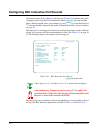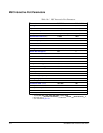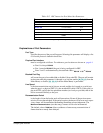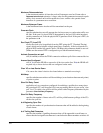
Configuring SNA 9-29
Path Cost
will be added together with all other path costs on a link between bridges. The total
will then be compared to other total path costs to determine the least "expensive" end-
to-end path.
Priority
prioritizes intra-nodal traffic; the higher the number, the higher the priority. (This pri-
ority has no effect on traffic exiting a node.)
Priorities are configured on all logical interfaces that use a physical frame relay port.
The device processor in the node uses these priorities to help determine the order in
which it will process protocols.
When configuring priorities, be careful to consider the types of
traffic being routed on other connections in the node.
Port
identifies the physical port containing the interface.
Make sure the physical frame relay port is not reserved for
backup DLCIs (as determined by the
For Backup Use Only?
parameter in the port record).
DLCI
matches the connection with an interface at the remote end of the link.
Make sure the DLCI is not part of a frame relay DLCI backup
group or frame relay PVC.
Format
is the RFC1490 encapsulation method used for LLC2 traffic.
Avoid configuring parallel Bridge/LLC2 frame relay links
between two SmartSwitches if one path is in native LLC2 format
and the other in some other format. Since the same interfaces are
used for both protocols and the spanning tree will eliminate dual
paths for bridged traffic only, a loop can be created, causing a
node failure.
Bandwidth Allocation Group
assigns the interface to one of sixteen groups whose parameters regulate bandwidth
usage. See "Configuring Bandwidth Allocation Groups" on page 7-6.
Host MAC Address
is the MAC address of the host or workstation to which the remote device needs to
connect.



